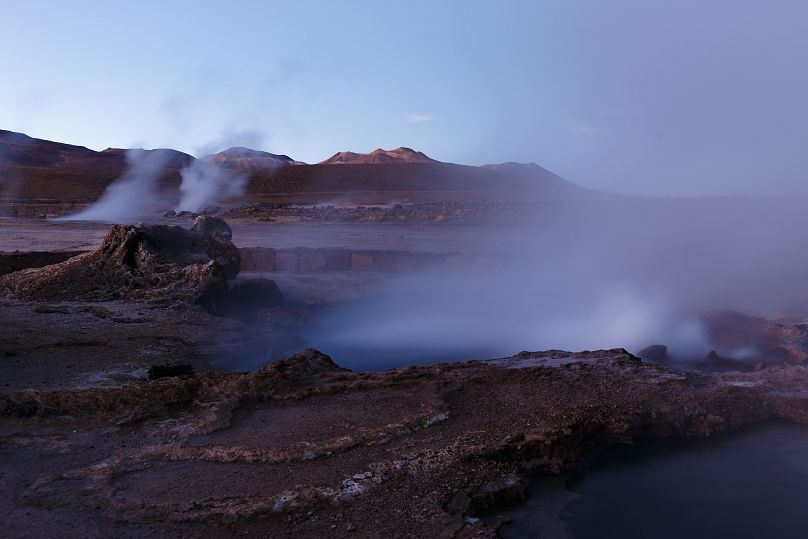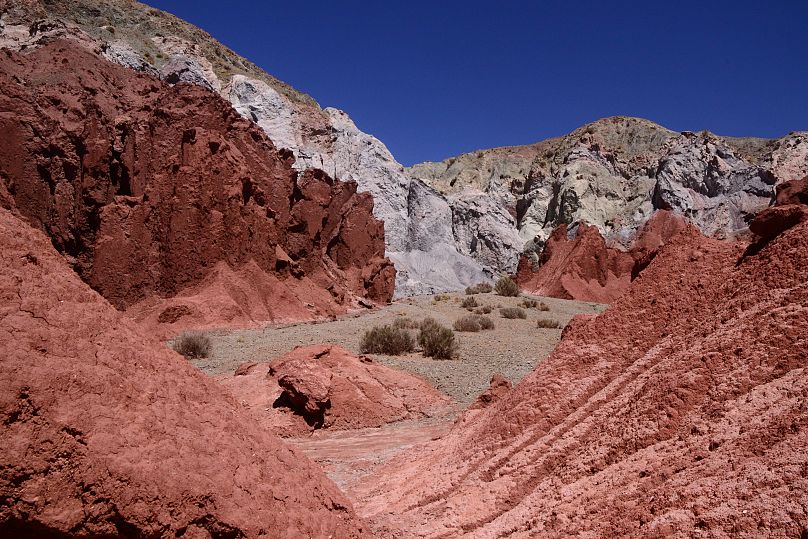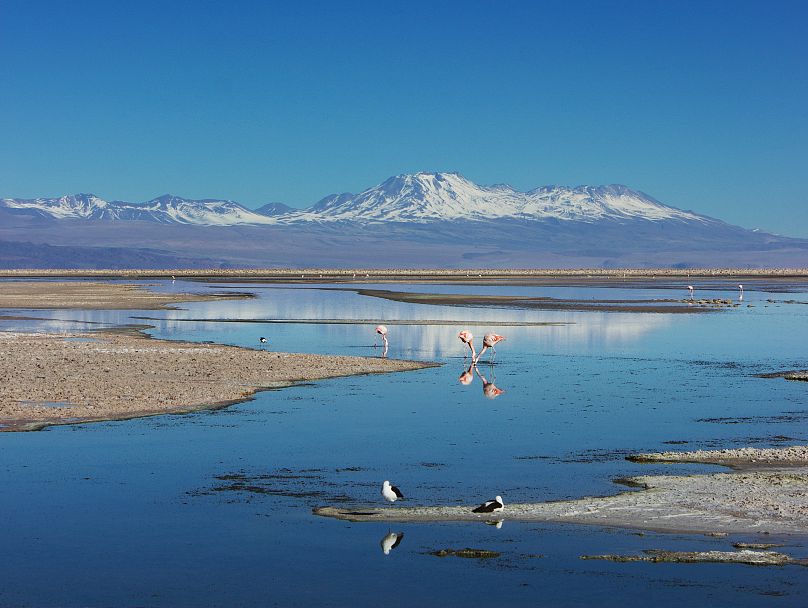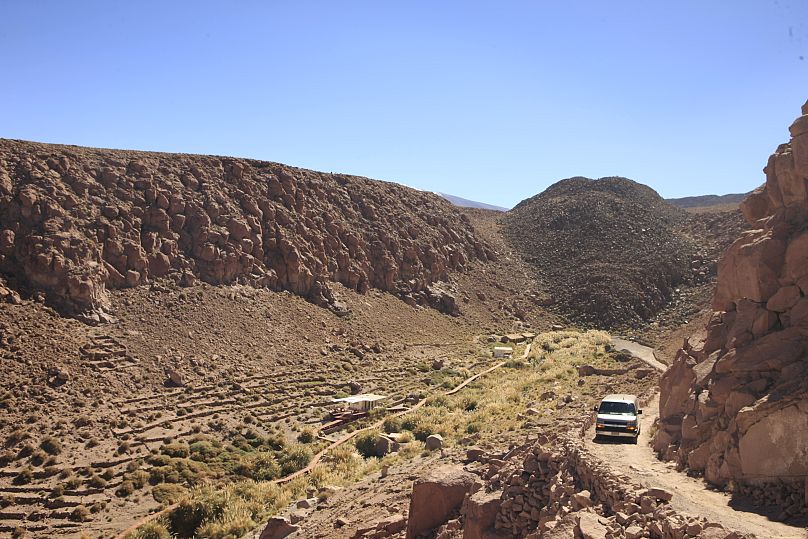Few countries do nature quite like Chile. Starting with the driest desert on earth, the world’s longest country stretches 4,300 kilometres to the icy southern tip of South America, passing giant sand dunes, snow-capped volcanoes, palm-fringed beaches, ancient rainforests, turquoise fjords and enormous glaciers along the way.
This is one of the few destinations left in the world where swathes of nature – be it moonlike landscapes or rainbow-coloured peaks – remain untouched, and where rare endemic wildlife like the vicuña and viscacha thrive in their protected natural habitats. Add to this an excellent food and wine scene (think meat stews slow-cooked in red wine and fresh-off-the-boat ceviche), and for many Chile is the trip of a lifetime. For when the country reopens its borders, here are five spectacular natural wonders you can’t miss in Chile.
Valle de la Luna
Named after its lunar-like landscape, the protected Valle de la Luna in Chile’s Atacama Desert is made up of towering sand dunes, razor-sharp mountains, and impossibly shaped rock formations sculpted by wind and water over millennia. Once the bottom of a lake, this brick-red valley in the Reserva Nacional Los Flamencos is today most beautiful at sunset, when the moonlike landscape melts from gold to red, then pink to purple as the sun dips over the horizon. What follows is one of the world’s greatest nighttime spectacles: a night sky so clear and unpolluted that you can make out individual star clusters of the Milky Way and other faraway galaxies. Most minibus tours leave around 4 pm from San Pedro de Atacama, but, for a more intimate (and less crowded) experience of the valley, hire a mountain bike in town and follow the marked trails to the reserve.
Geyser del Tatio
Sitting 4,200 meters above sea level in Chile’s mountainous north is El Tatio, the world’s third-largest geyser field. Fed by over 80 geysers, this otherworldly landscape of snow-capped volcanoes and giant frost-covered cacti puffs furiously with hundreds of fumaroles (holes in the earth that emit steam and gasses) and bubbling hot pools around the clock. The best time to visit is between 6 and 7 am, when the geysers are most active and the rising sun gives the surrounding volcanoes a sherbert-pink hue. At this time you’re also more likely to spot Chile’s endemic viscachas, vicuñas and ñandúes as they breakfast on the sunshine-yellow yareta plant as the sun melts the early morning frost. While you’re here, take a dip in the Tatio hot springs or, for a selection of eight natural pools with a desert backdrop, head to the nearby Puritama hot springs.
Valle del Arcoiris
The 3,000 metre-high Valle del Arcoiris, or Valley of the Rainbow, gets its name from the ochre, green, white and yellow earth that make up the valley’s wind-carved mountains and hills. The colourful layers are created from the variety of salts and minerals found in the area’s rich red soil, creating a colourful Martian landscape fit for a sci-fi film. The valley is just 90km from San Pedro de Atacama, making it an easy day trip on an organised tour. While you’re here, be sure to explore nearby Yerbas Buenas, an area home to petroglyphs more than 10,000 years old.
Salar de Atacama
Chile’s largest salt flat spans 3,000 square kilometres across the scorched desert plains of the Atacama. When there’s water, the perfectly still pools reflect the piercing blue sky and surrounding snow-capped Andean peaks like a giant mirror, making the horizonless desert landscape feel endless. When the pools are dry, thick salt formations rise from the ground like thousands of mini white cathedrals, their spires audibly crackling as the sun dips behind the Andes and the sky turns to fire. Atacama’s salt flats are at their most colourful from December to February, when thousands of candy floss pink flamingos, including the rare Andean flamingo, flock to the pools to feed and breed in the sea monkey-rich waters. The yellow-headed Puna Plover, Andean gull and the Chilean swallow can also be spotted here.
Guatin Canyon
Sitting at 3,000 metres above sea level, the clay-red Guatin Canyon is where the warm Puritama river and the glacial-fed Purifica rivers merge to create the Vilama River. The Vilama’s combination of warm and cold water has allowed the valley’s distinctive landscapes and ecosystems to thrive, including stunning geological formations and thousands of alien-like giant cacti, some of which are thought to be hundreds of years old and can reach up to seven metres in height. The canyon, scattered with crystal-clear rivers, waterfalls and hot springs, is the perfect hiking territory, with a mixture of easy half-day hikes and challenging multi-day trekking adventures. Although you’ll have to navigate across large boulders and rushing rivers, reaching the top of the canyon is well worth the effort. From here, it’s a 360-degree view of the green, yellow and red-hued valley floor backed by the Andes and Domeyko mountain ranges.





